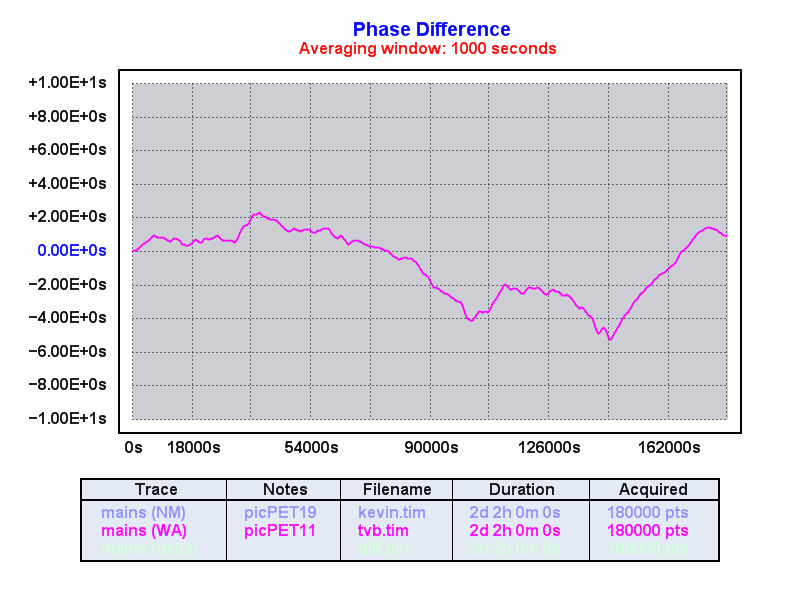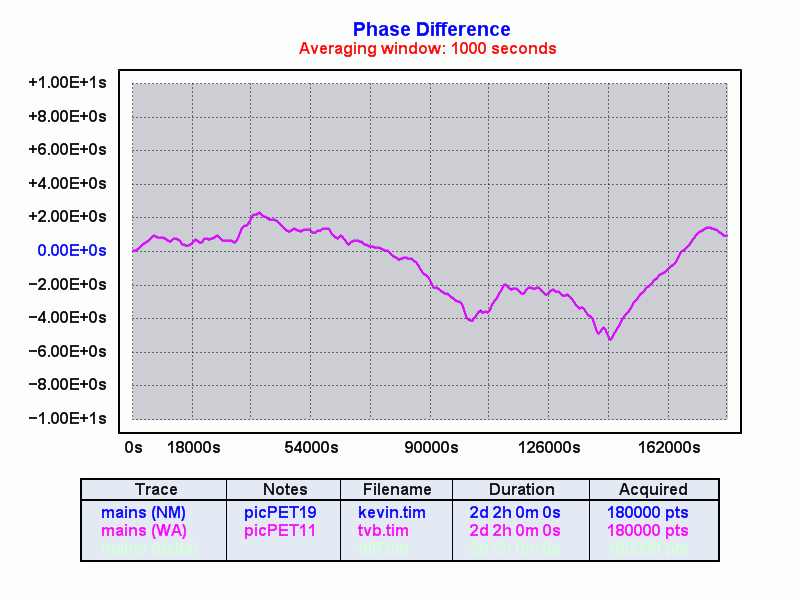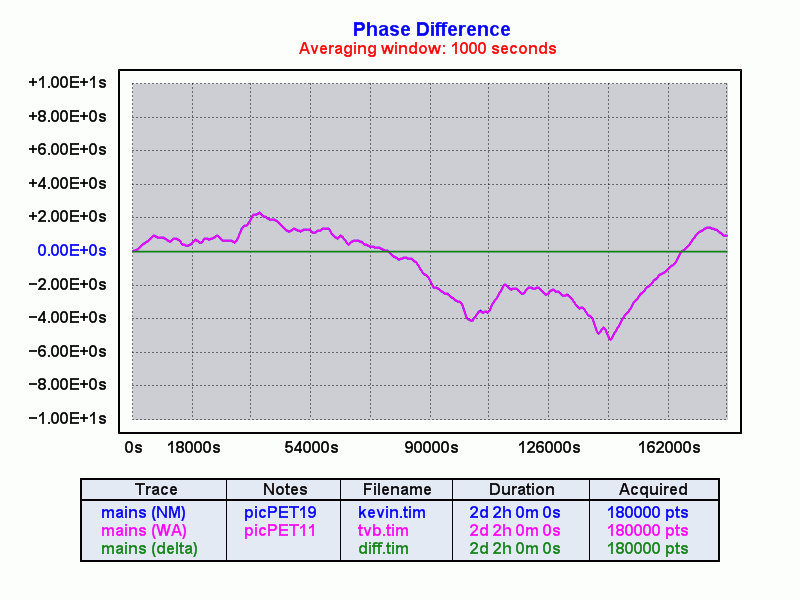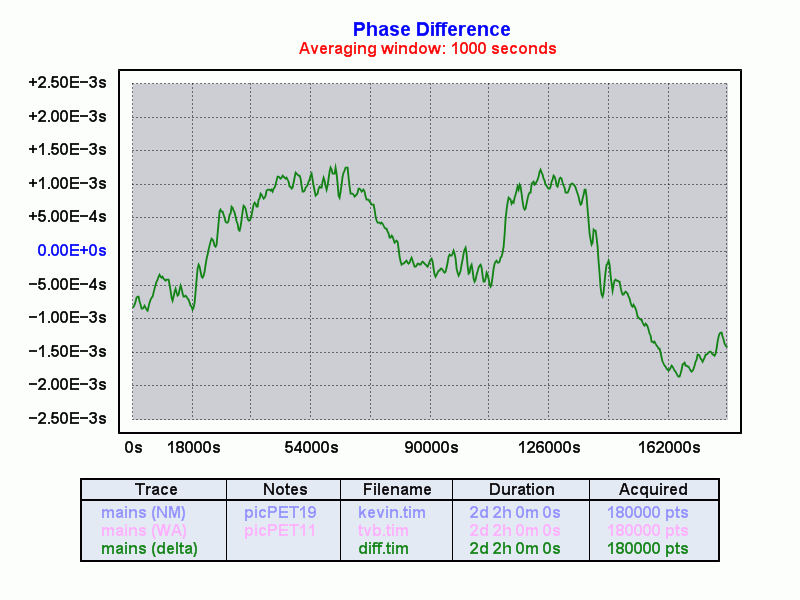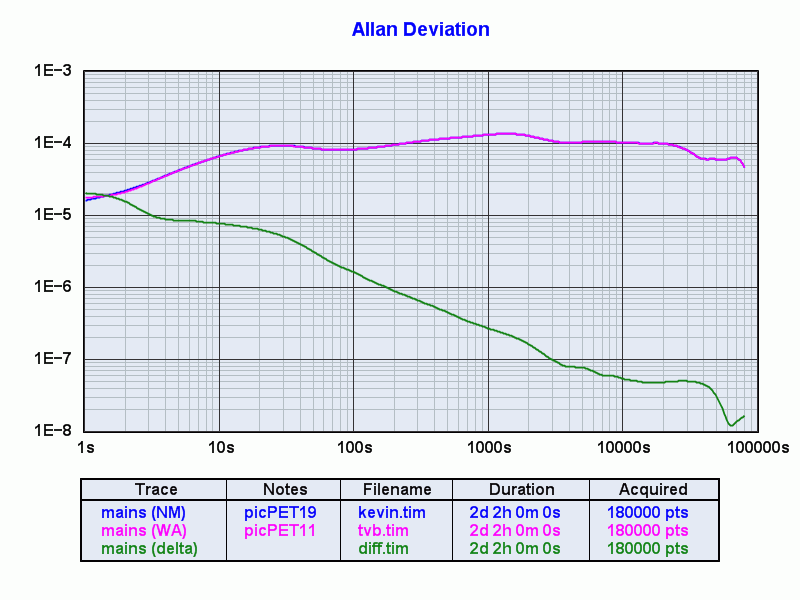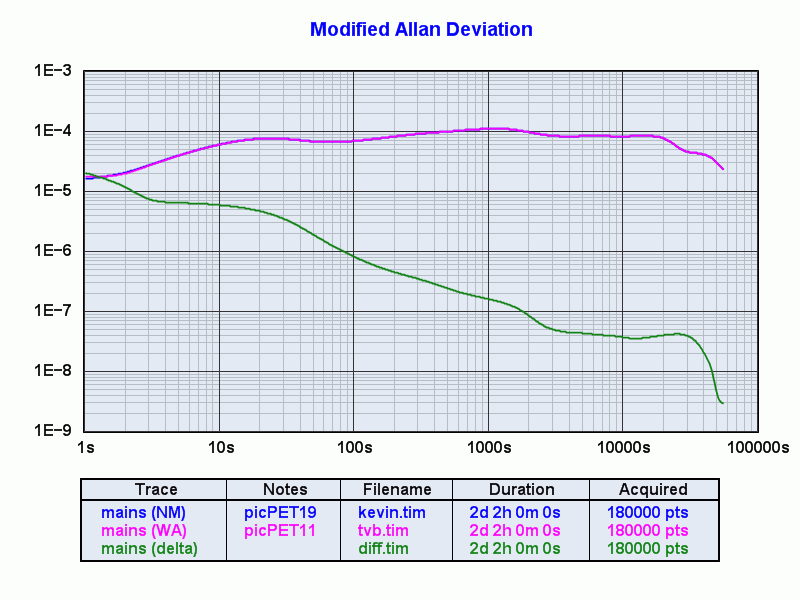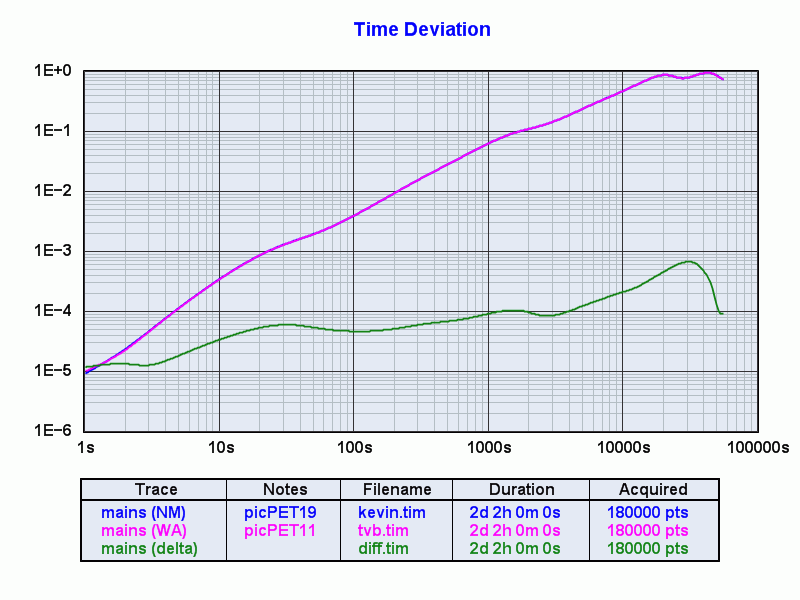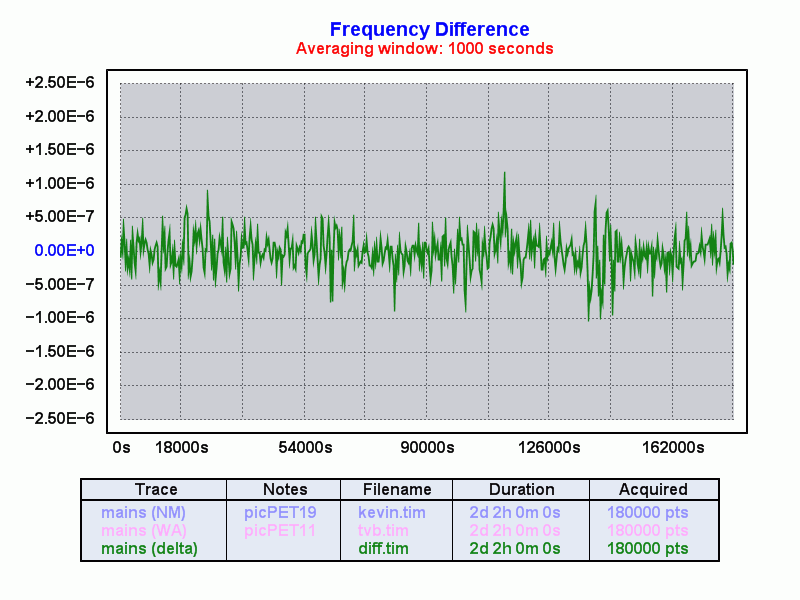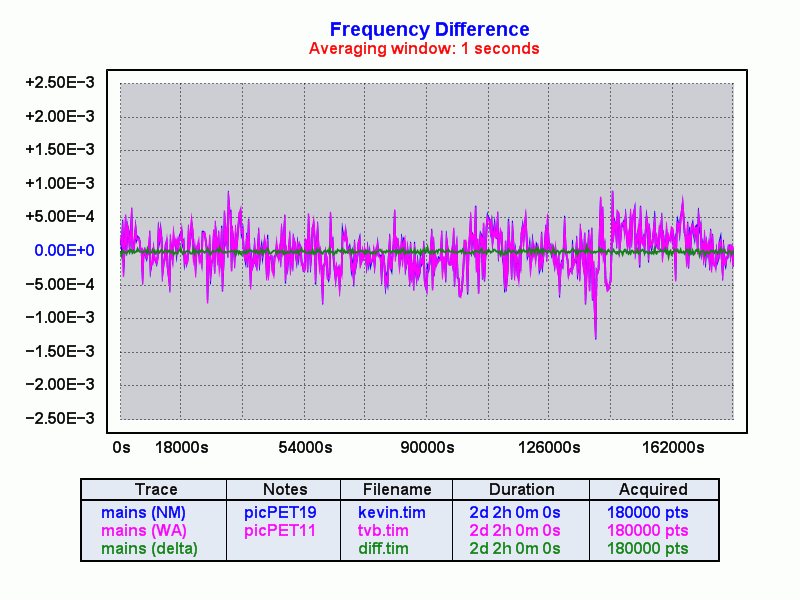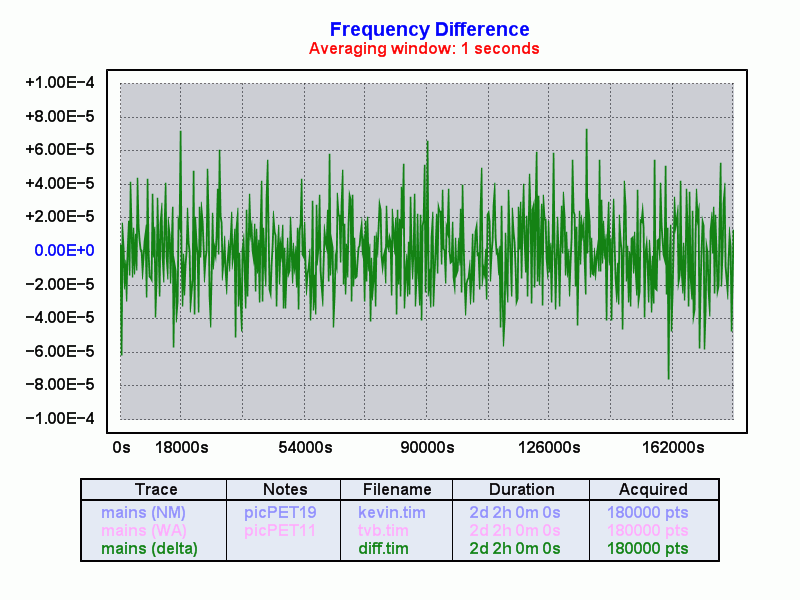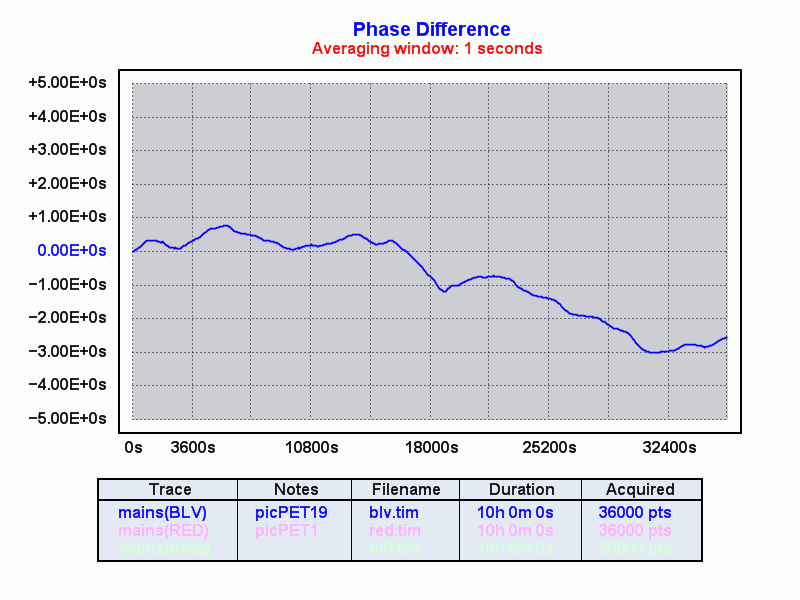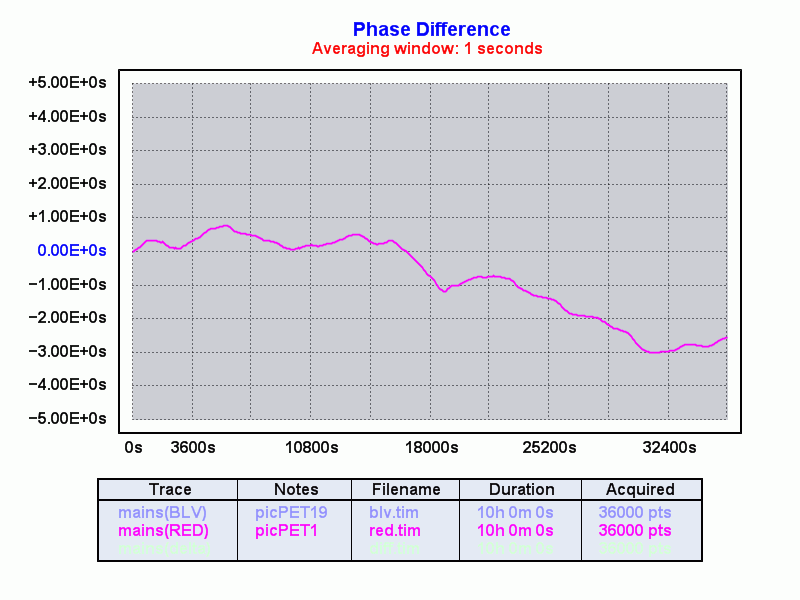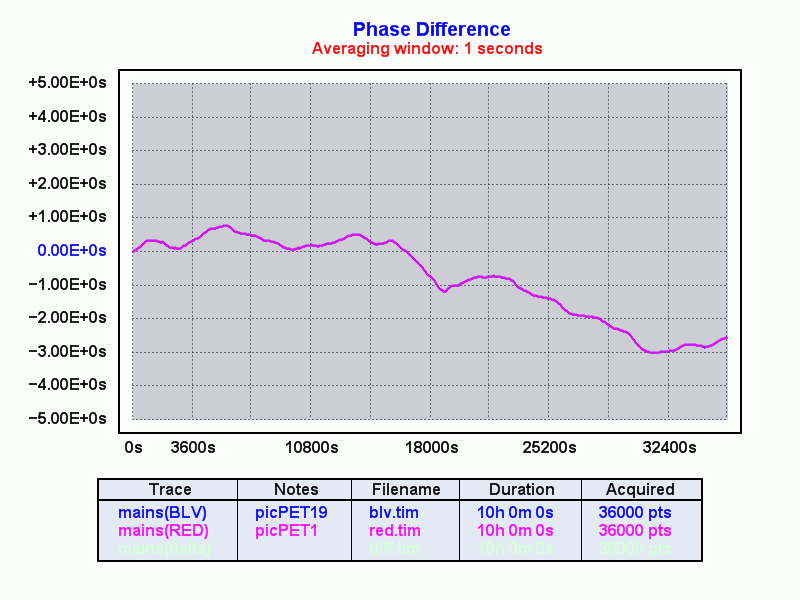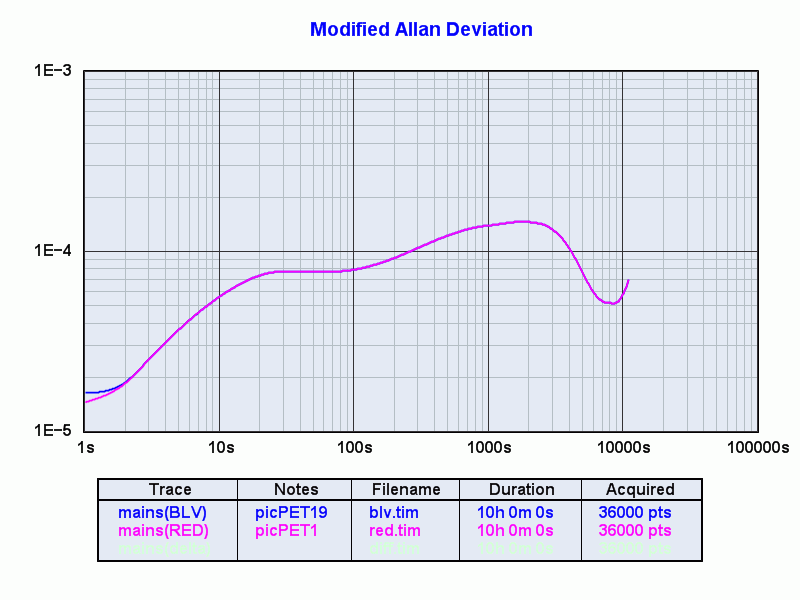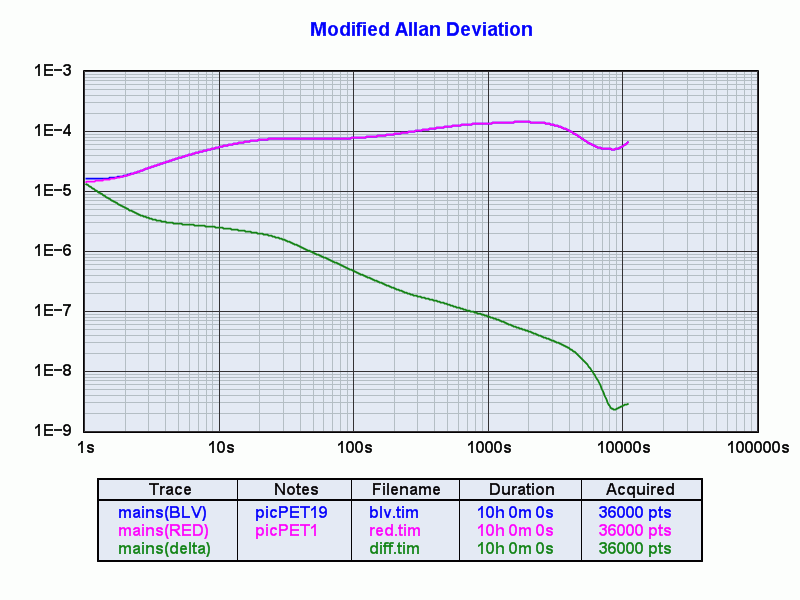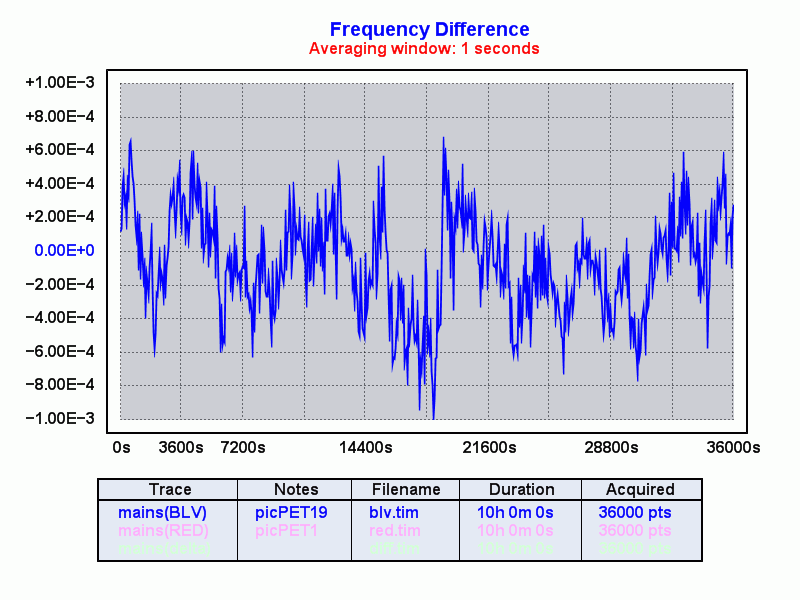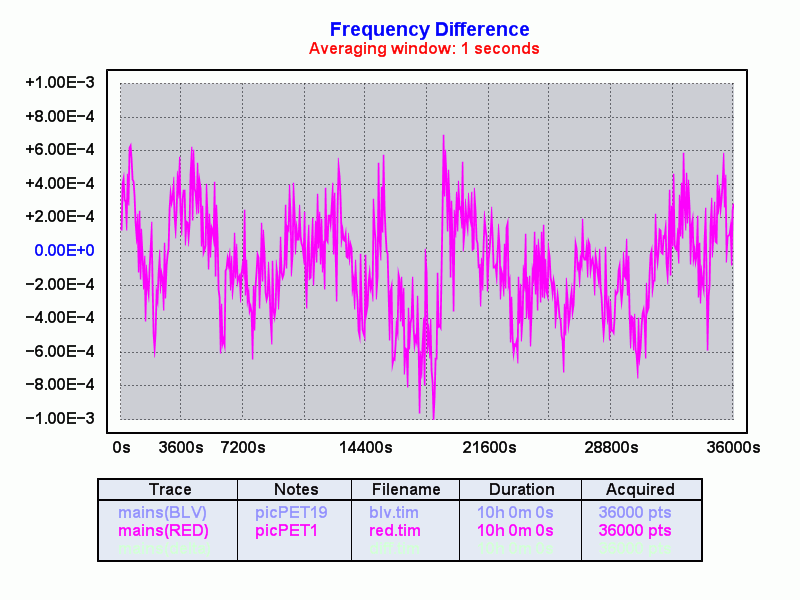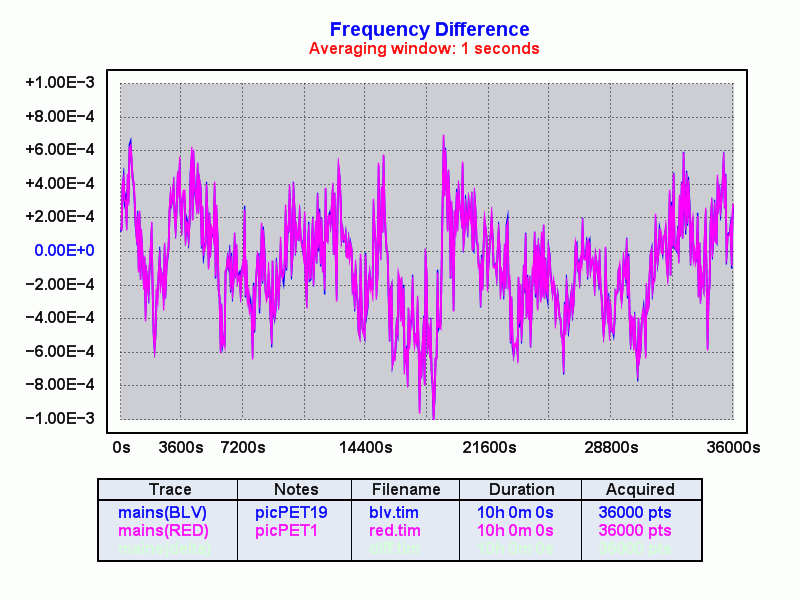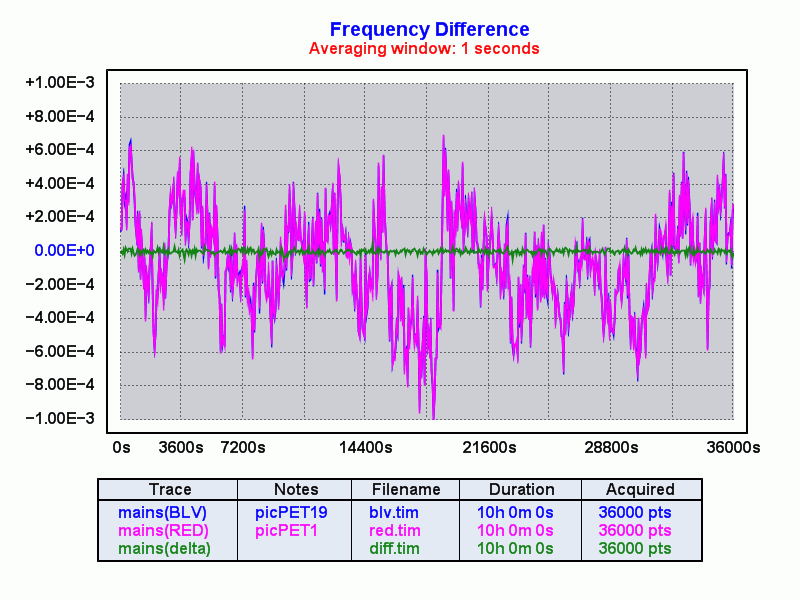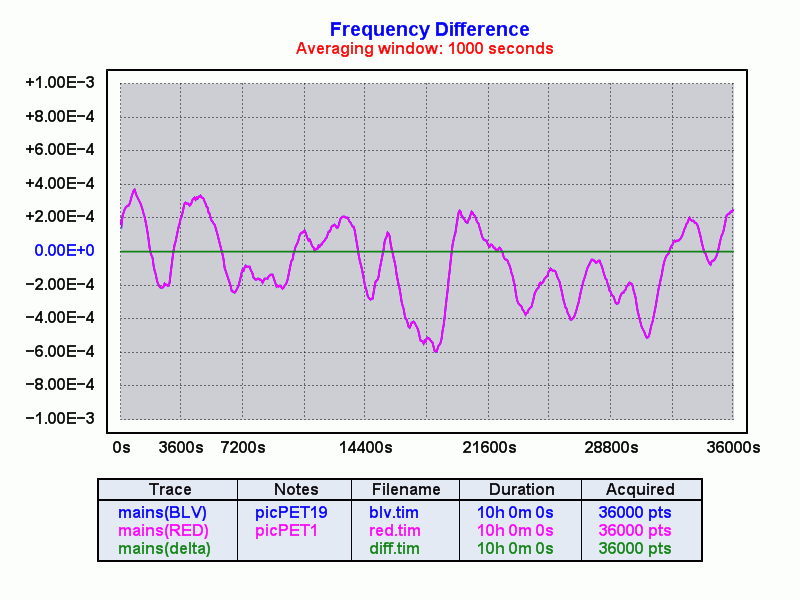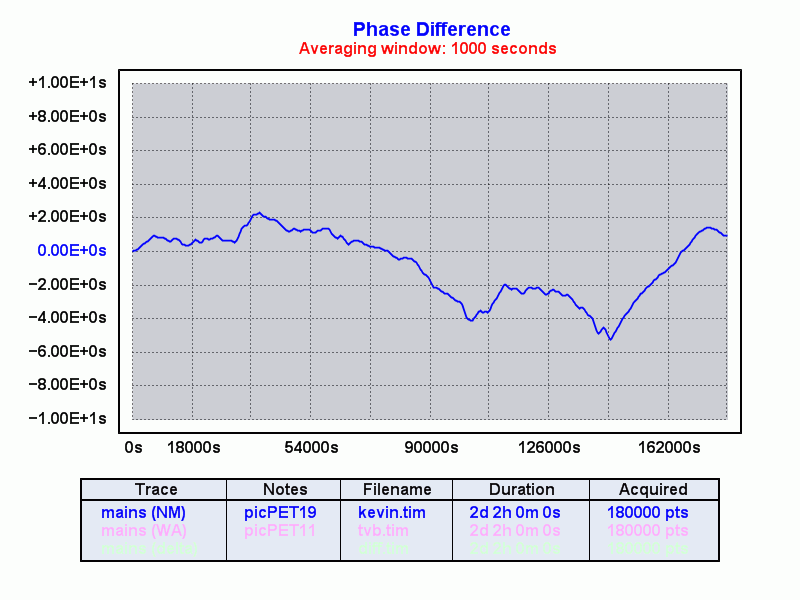
A convenient way to monitor power line phase or frequency is to timestamp every cycle. This generates a lot of data (about 5 million samples per day) so for most purposes we keep just one timestamp per second. This gives about 86400 samples per day. The raw timestamp data can be manipulated to generate traditional phase, period, and frequency strip charts. One can also produce histograms and frequency stability statistics from the data. With raw one second phase data the averaging interval for frequency measurements can be chosen after the fact rather than being hardcoded as part of the measurement. The additional beauty of using timestamps is that it allows inter-comparison among multiple locations. This is done by aligning the data sets and subtracting the timestamps.
The separate locations can be as close as two outlets in the same house, or two houses in the same city, or two different cities on the same power grid.
I used a picPET to timestamp mains power line cycles here in Bellevue, WA. Kevin Rosenberg did the same from his location in Albuquerque, NM. The timestamps have microsecond resolution which is more than enough for all analysis. Kevin used a 10 MHz Rubidium reference.
Although power line phase (wall clock time) varies by many seconds a day, the common view phase is stable to mere milliseconds. Common view frequency stability gets down to the ppm level within one minute and ppb levels within one day. This means the noisy, wandering power line can be used to measure the drift of a quartz oscillator in Bellevue against a Rubidium standard 1500 miles away in Albuquerque!

